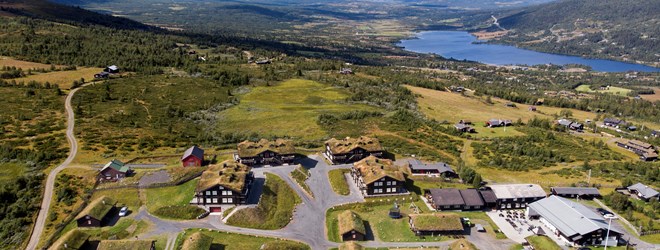A PENSION DOWN IN THE VILLAGE WAS RUN BY MAGNHILD AND KNUT SWAIN. THEY WERE OUT EARLY TO OFFER THEIR GUESTS SOMETHING MORE THAN JUST A BED AND FOOD. THEY INVITED THEM TO THE MOUNTAINS.
1967. At Vaset, they owned a small cottage, and here - with a view of Jotunheimen and Stolsvidda - they invited the guests up for a cup of coffee and hot waffles. It all started small, but they quickly noticed that more people wanted to enjoy the mountain when they visited the boarding house. In 1967 a storehouse was therefore bought which was converted into a café in 1970.
As demand increased, Magnhild and Knut expanded and converted the cafe into a small accommodation with ten rooms, and on 22 December Gomobu Fiellstue opened its doors to its first guests.
1974-1981. The next decade there were major changes at Gomobu. Ten rooms were built on the second floor four years after the first guests had spent the night in the mountains. At the beginning of the 1980s, the mountain lodge was demolished and rebuilt, and in 1981 the lounge, dining room, lounge and reception area were ready to welcome families and groups with children.
1991. There is a time for everything and it was now ready for the next generation to drive Gomobu forward. In 1991, his son Bjørn Oscar and his wife Astrid Sveine took over the day-to-day operations.
1994. The year Lillehammer was put on the world map with Haakon and Kristin at the front. The ripple effects spread to Oppland and in Valtjendvegen, eight new rooms were built which were brought from the Olympic city. In the same year, ten cabins were set up for use in the courtyard and old Nesja Skule got a new home outside the mountain lodge. Today, Nesja Skule is better known as "Timbra", and is used for courses & conferences, weddings, baptisms, confirmations and anniversaries.
2000 - Today. A lot has changed since Bjørn & Astrid took over in 1991. Two new rental cabins have been built, a further eight rooms in the mountain lodge. Library, grease stall for skis and sauna. All bathrooms have been renovated and the cabins and rooms have been given new colors to keep up with the times.
For us, it is important to preserve the tradition of Gomobu.
This is something we are still working towards today - close-to-nature experiences, good food and a cozy atmosphere.
